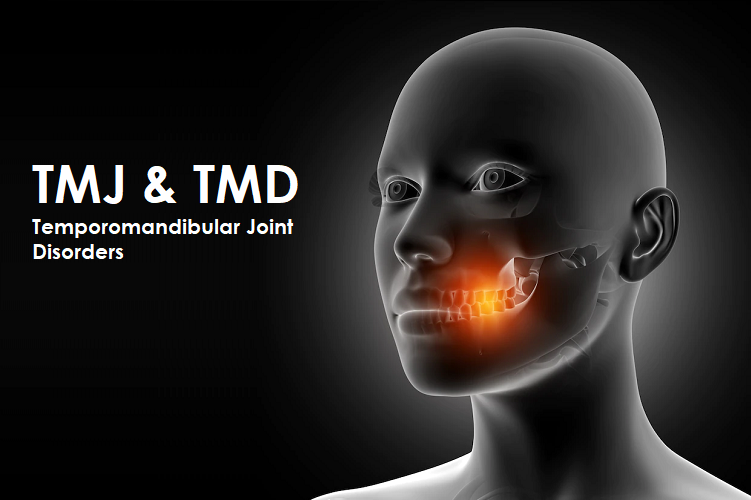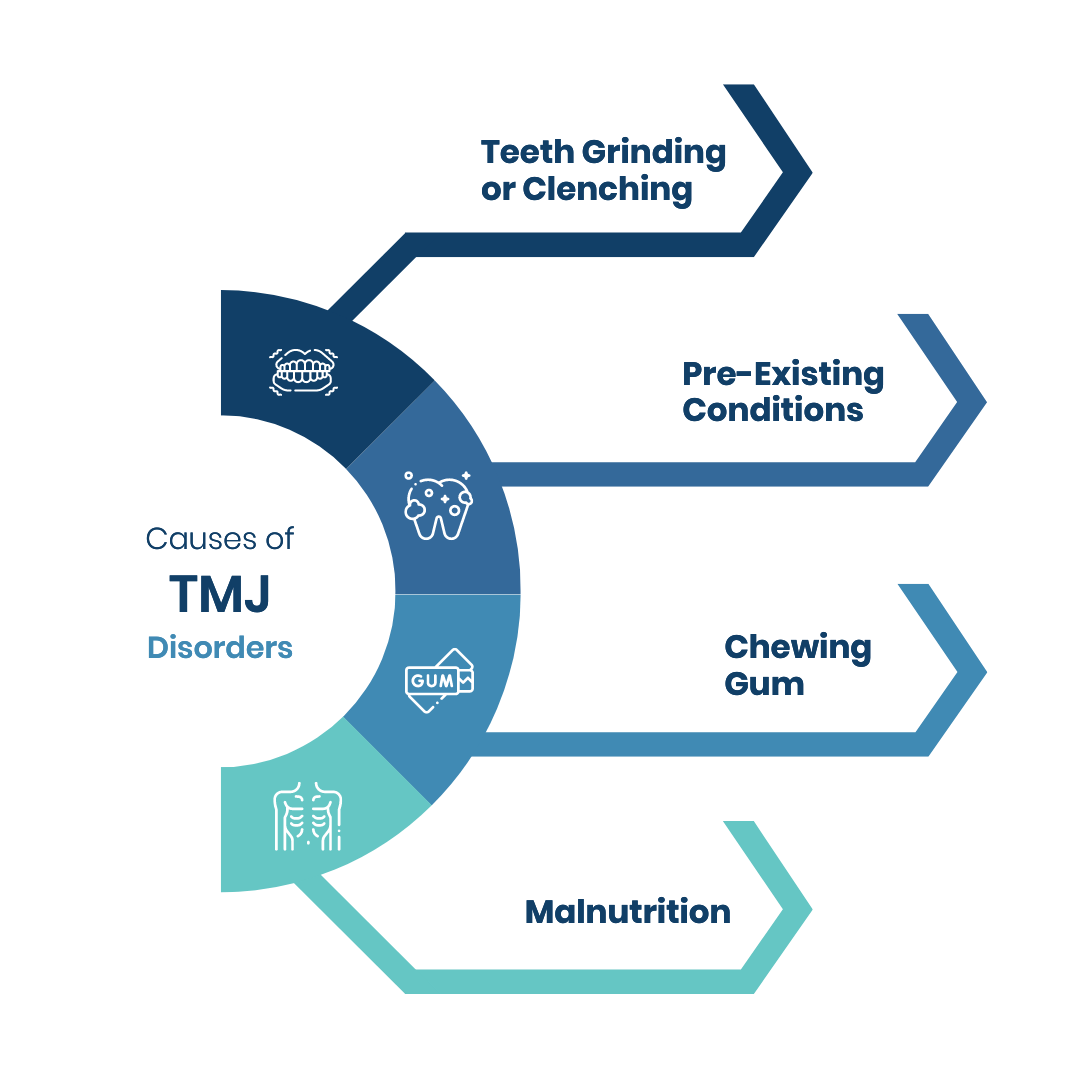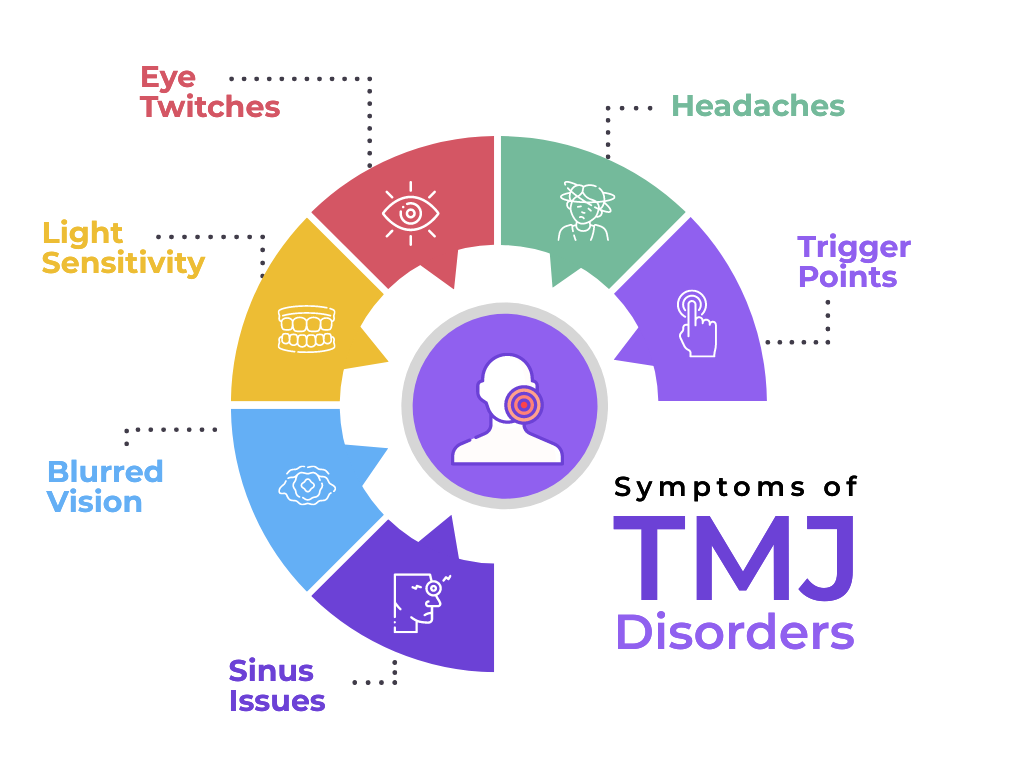TMJ disorders, also known as TMD, are a group of symptoms characterized by pain, dysfunction, and other issues in the temporomandibular joint, which connects the lower jaw to the skull. The condition can affect the ability to speak, chew, swallow, and make facial expressions. It can be a long-lasting disorder that requires professional advice.
The TMJ is one of the most complex joints in the human body. It consists of two parts: a hinge and a sliding disc. These parts are covered with cartilage, tendons, and muscles. TMJ disorders can cause many problems in people of all ages. This is why it’s important to understand the causes and symptoms. There are several ways to treat the condition. Read on to learn more.

Causes of TMJ Disorders
Temporomandibular joint disorders are common medical conditions that cause pain in the jaw area. They are usually caused by stress and can be treated with simple and effective home remedies. This disorder can become chronic if left untreated, limiting your quality of life.
If you suffer from TMJ, you should know some common causes. There are many potential causes of TMJ disorders. These include traumatic injuries, stress, gum chewing, malnutrition, pre-existing conditions, and malalignment. Genetics may also play a role.

1. Teeth Grinding or Clenching
Teeth grinding and clenching can cause problems with the temporomandibular joint. They can lead to many dental and other health issues if left untreated.
Many people have experienced TMJ symptoms. This includes muscle pain, jaw stiffness, headaches, and facial pain. It can also affect the ability to chew, speak, and sleep.
Teeth grinding and clenching can occur during the day, at night, or both. While the symptoms can vary, most cases are linked to stress and tension. Trying to manage these issues can reduce the frequency of your bruxism.
Some medical disorders may also cause teeth grinding. Bruxism can cause headaches and referred TMJ pain. In severe cases, it can cause jaw damage and tooth loss. You can check with your dentist to determine if you are at risk for bruxism.
2. Pre-Existing Conditions
The TMJ is a joint that allows jaw movement. A person with a TMJ disorder may experience pain and dysfunction. These symptoms can cause problems with chewing and swallowing and other issues.
Many factors contribute to TMJ disorders symptoms. They include trauma to the jaw or neck, genetics, and hormonal causes. However, most people with this condition will improve after a few months of treatment.
Medications, including anti-inflammatory drugs, have been found to relieve TMJ pain. Dental care, such as wearing mouthguards, can also help. Dentists also recommend gentle exercises and soft foods. Patients are advised to avoid clenching or grinding their teeth while sleeping.
3. Chewing Gum
Chewing gum can be a great stress reliever but can also harm your teeth and temporomandibular joint. It can strain the jaw muscles and create TMJ, which can cause pain and lead to migraine headaches. This is especially true when you’re chewing gum for a long time.
In fact, chewing gum may be the TMJ’s worst nightmare. Studies show that it can lead to serious jaw pain, fatigue, and other problems. Thankfully, there are some steps you can take to keep the jaw healthy and avoid TMJ.
First, you should learn what you’re chewing. Avoid hard foods and other things that can irritate your mouth. Instead, try eating softer vegetables and meats. If you do chew gum, be sure to limit it to a couple of pieces a day.
Second, it’s important to know how to reduce your stress. Some simple methods include meditating, taking short walks, and focused breathing exercises.
Third, you should get a professional diagnosis. Your dentist will be able to pinpoint the exact cause of your TMJ pain and offer treatment options. Depending on the severity of your condition, you might need surgery or muscle relaxers.
4. Malnutrition
Malnutrition is a disease characterized by a lack of nutrients such as vitamins and minerals. People who are poor or who are suffering from chronic diseases are at risk of malnutrition. It is a global problem.
One of the common causes of malnutrition is the lack of knowledge about the right types of foods. This is why educating yourself about the benefits of a well-balanced diet is important.
If you are worried about the potential for malnutrition, you can make an appointment with your doctor. Your physician can perform a blood test to check for micronutrient deficiencies. You can also get urine tests to measure the body’s waste products.
Some signs of malnutrition include brittle hair, dry skin, low body weight, and muscle atrophy. The body breaks down tissues without the proper amounts of macronutrients such as carbohydrates and proteins.
Symptoms of TMJ Disorders
TMJ disorder is a condition that affects your jaw and the muscles in your head. This can lead to many symptoms, which include headaches, eye cramps, blurred vision, and sinus problems. Different treatments are available, but you should discuss these with your doctor to determine which is best for you.

1. Trigger Points
When people have TMJ disorder, trigger points in their muscles are likely to develop. These are hypersensitive points that produce pain. This pain can spread to other areas, such as the neck and eye.
Trigger points are hypersensitive spots in a skeletal muscle. They are found in muscles that are involved with moving the temporomandibular joint. Symptoms of trigger points can include headaches, low back pain, tinnitus, and TMJ pain.
2. Headaches
Headaches are a common TMJ disorders symptoms. They are caused by jaw activity. However, they can also be caused by other factors. These include chewing and clenching teeth.
If you experience frequent headaches, you should investigate your condition further. Often, stress is the culprit. Stress can cause tension in your jaw and other parts of your body, leading to headaches.
It’s important to seek treatment for headaches as soon as possible. In some cases, you’ll be able to find relief on your own. However, seeking a professional diagnosis is better if you suspect you have TMJ.
3. Eye Twitches
Eye twitches are a common condition that occurs when the muscles of the eyelids involuntarily twitch. Although they are usually harmless, they may be a symptom of a more serious eye problem. Fortunately, there are ways to control them.
One of the most common causes of eye twitches is stress. Stress can cause the body to release hormones, which cause muscle arousal. Using relaxation techniques to reduce stress can alleviate eye twitches.
Another common cause of eye twitches is allergies. Symptoms of an allergy include red, itchy, and dry eyes. Itching can be relieved by rubbing the eyes or using antihistamines.
Some other possible causes of eye twitches are fatigue and a poor night’s sleep. These cramps can also be caused by eye strain from looking at screens.
While TMJ disorders symptoms are often the culprit for tension headaches, they can cause eye pain and blurred vision. It can also lead to problems with hearing.
4. Light Sensitivity
TMJ is a complex condition that affects the temporomandibular joint. This joint connects the lower jaw to the skull. If the joint becomes inflamed, pain and other TMJ symptoms can occur. Light sensitivity, or photophobia, is a common symptom of TMJ disorder.
The temporomandibular joint is close to the eyes, making it a prime location for light sensitivity. The nerves surrounding the TMJ may also connect to the part of the brain that monitors hearing. These nerves can become irritated when the joint is inflamed.
5. Blurred Vision
Blurred vision is a common symptom of TMJ disorder. This condition involves inflammation of the temporomandibular joint, which connects the lower jaw to the skull.
When TMJ sufferers experience vision problems, they may not be aware of the connection. They might attribute the problem to other conditions, such as headaches. The pain of a migraine can also lead to blurred vision.
If you are experiencing blurred vision, it is important to see a doctor as soon as possible. Several factors, including muscle strain, herniated discs in the neck, or sinus infections, may hamper your vision.
6. Sinus Issues
Sinus issues are a common symptom of TMJ disorder. Although it is not the primary cause, it can aggravate the condition. If left untreated, sinus issues can affect the health of the facial structures and lead to ongoing pain. Fortunately, some treatments can relieve the symptoms.
Depending on the severity, a patient may require surgery to correct the problem. Alternatively, a doctor can prescribe antibiotics, nasal sprays, cold remedies, and allergy medications. These medications may provide short-term relief but can’t treat the underlying condition.
Chronic sinus disease can result from systemic inflammatory diseases or dental infections. There are also several risk factors, such as smoking and environmental irritants. A thorough history is needed to determine the cause of the TMJ symptoms.
Treatments for TMJ Disorders
If you suffer from TMJ disorders, you are probably aware that several treatments are available. There are many ways to alleviate your TMJ pain, whether surgical methods such as a night guard or biofeedback. However, you should always consider whether you need to have this procedure done.
1. Surgery
TMJ disorder is a condition that can cause jaw pain, headaches, and neck aches. It can also cause clicking, popping, and locking of the jaw when it is moved. If you’re experiencing these symptoms, you might need surgery.
Luckily, there are options for treating TMJ. Most of them involve minimally invasive procedures. Before choosing a procedure, you should be well informed about the causes of TMJ.
There are three main types of TMJ surgery. The first is arthroscopy. This involves inserting a small camera and instrument into the joint. The surgeon will then be able to see and reposition a displaced disc or loosen stiffness in the joint.
The second type of surgery is open-joint surgery. During this procedure, a small incision is made in the skin crease just forward to the ear. Open-joint surgery is typically performed on people with severe TMJ pain.
Another common method for treating TMJ is neuromuscular orthodontics. Neuromuscular orthodontics involves using an orthodontic device to reposition the jaw.
2. Biofeedback
Biofeedback for treating TMJ disorder decreases muscle tension and promotes relaxation. This can lead to lasting relief.
Biofeedback uses an electronic sensor to monitor muscle tension and alert the user to stress. You can pair the feedback with an auditory, acoustic, or vibratory signal. During a typical session, the patient is given instructions on how to relax and relieve muscle tension.
Biofeedback is considered safe in most cases. However, checking with your physician before using the technology is important. You may need to undergo more than one session to obtain optimal results. It is also important to learn the proper techniques before using the device.
Biofeedback has been demonstrated to have a beneficial effect in many conditions. For instance, it has been used to reduce anxiety and depression. Similarly, it has also been shown to help people recover from a stroke.
It is important to note that biofeedback is not a cure for TMJ. Instead, it is an adjunct to therapy. Working with a physician and a therapist is important to obtain the best results.
3. Relaxation Exercises
You can use some relaxation exercises to ease TMJ pain. These techniques can also improve your overall mobility and strengthen your jaw muscles.
One of the more useful relaxation exercises for treating TMJ involves breathing. To reap the benefits, you must breathe slowly and deliberately. This will not only reduce stress but will improve your energy levels as well.
Other relaxation exercises include taking a warm bath or using essential oils in the tub. You can also set a timer to remind you to take a moment to relax. Another good relaxation exercise involves reading a book. You may be surprised by how much this simple action can help you.
A related exercise is the tongue-to-roof of the mouth, also known as the goldfish exercise. This exercise is similar to the chin-to-neck movement but involves using the tip of the tongue to open and close the mouth.
4. Night Guards
You may suffer from TMJ disorder if you grind your teeth while sleeping. This condition affects millions of adults worldwide. It can cause pain and swelling, as well as headaches. You may also have difficulty chewing normally.
Wearing a night guard can alleviate your TMJ symptoms. Teeth grinding can cause gum recession and enamel erosion, which increases the risk of cavities and tooth decay.
Your dentist can help you diagnose the problem and recommend the right treatment. A custom-fitted night guard can ease jaw pain and protect teeth from further damage.
Dental night guards are a good option if you suffer from TMJ. These night guards are designed to align your jaw while you sleep. They are made of hard acrylic material.
In the process, your dentist takes impressions of your teeth. He then uses these impressions to create a guard that will protect your teeth from damage. A dental night guard is a custom-fit, acrylic device made to order.
Conclusion
TMJ is a chronic disorder that you can treat with medications, exercises, and behavioral interventions. Practicing good posture can reduce the risk of developing TMJ disorders or symptoms. Stress management and a healthy diet can increase the effectiveness of treatment.
Taking advantage of counseling and behavioral interventions is important for everyone with TMJ. This can help you avoid behaviors that aggravate your TMJ symptoms and give you more information on managing the disease.


